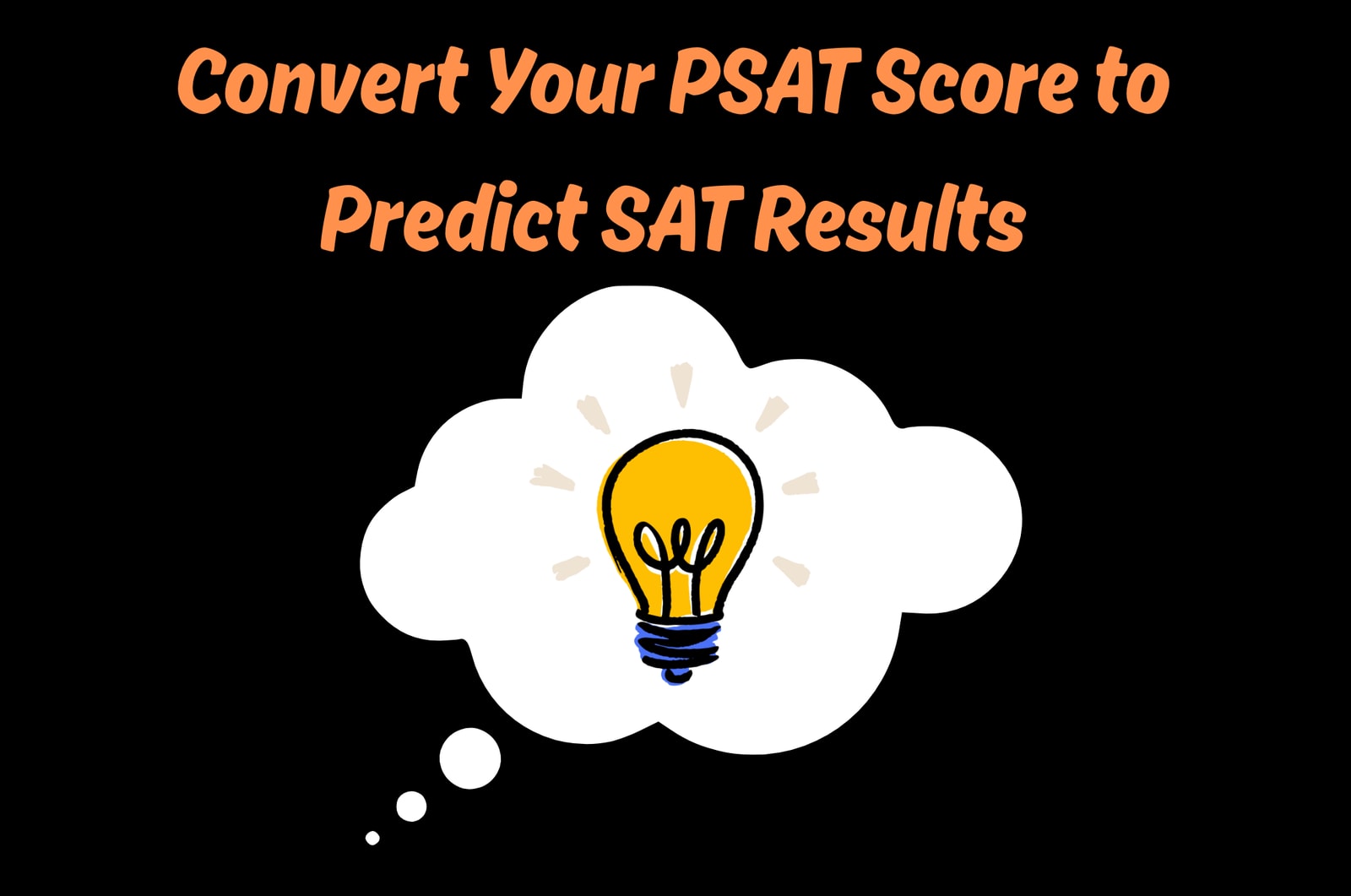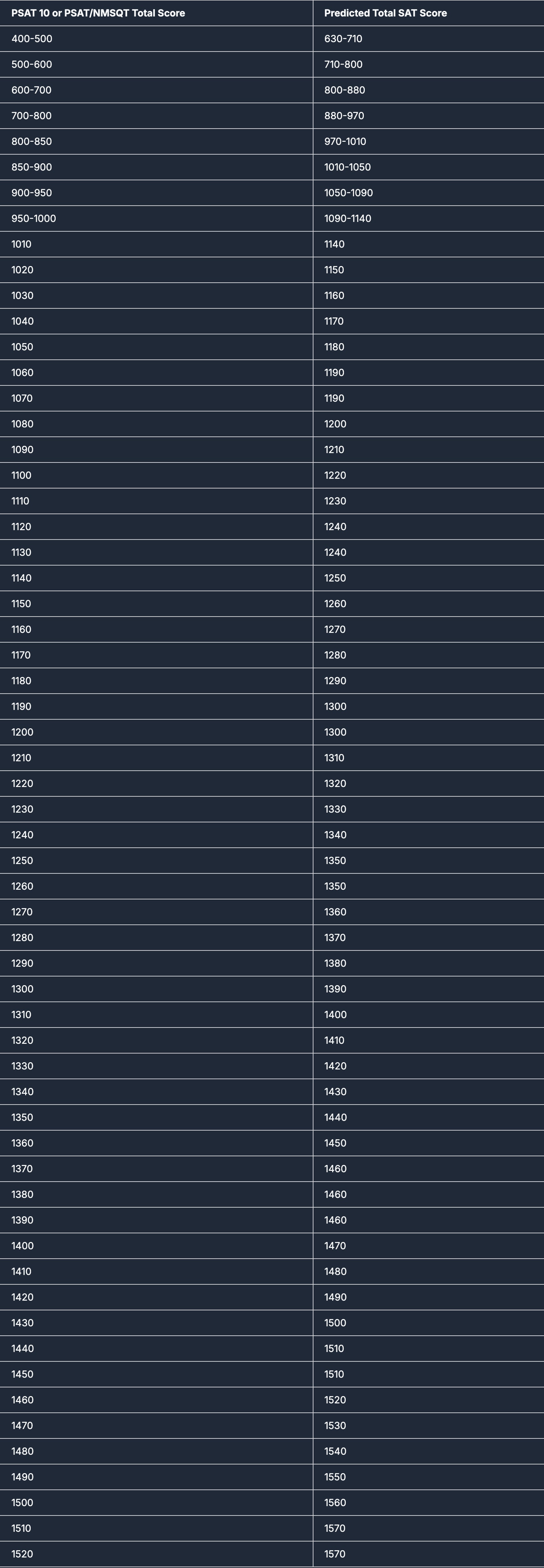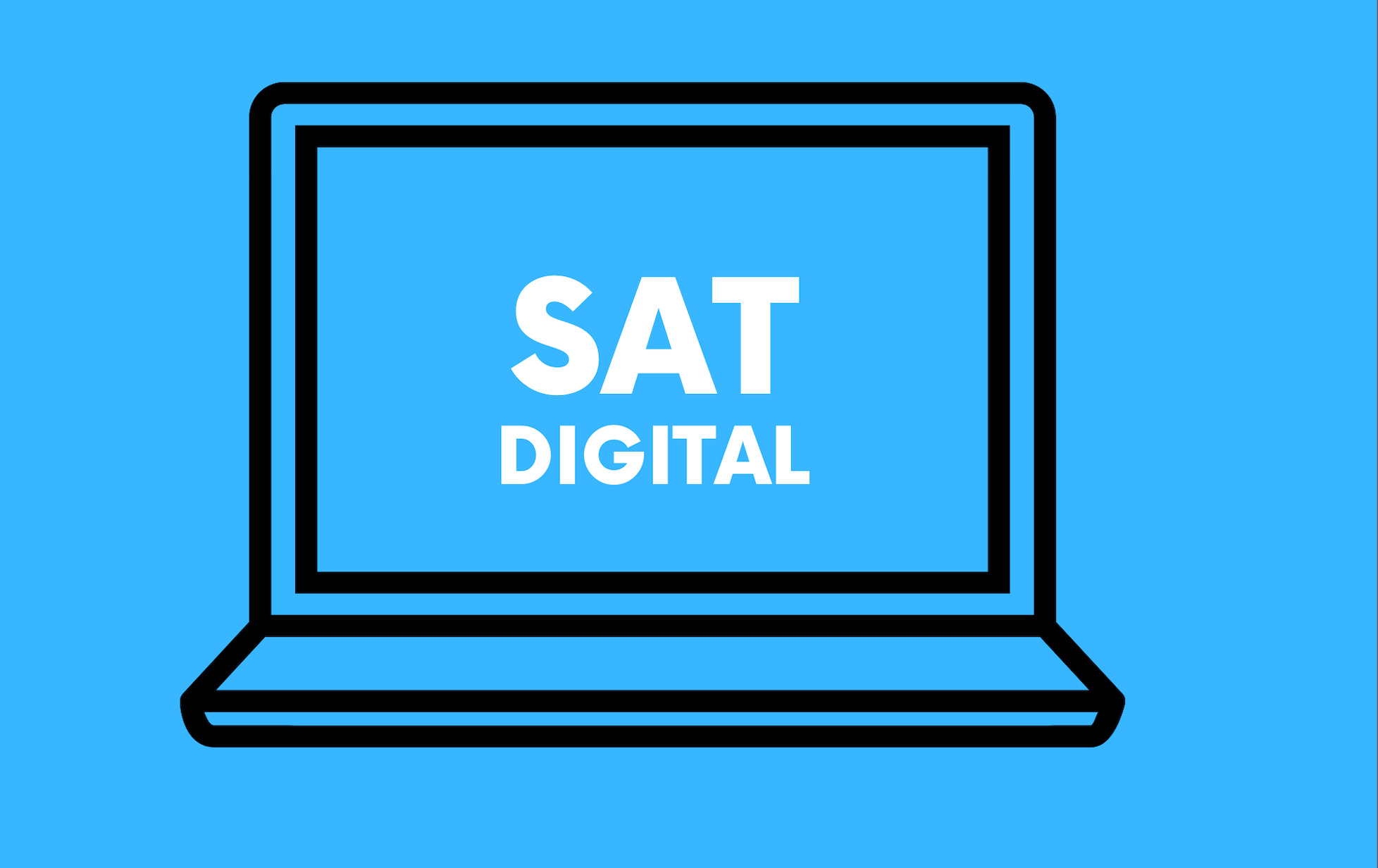How to Use Your PSAT Score to Forecast SAT Performance
Author
Phoenix Wilder
Date Published

Converting your PSAT score to a projected SAT score can help you plan your study approach and set realistic goals. If you want to understand how to predict your SAT score from your PSAT performance, see the conversion chart below and read on for more information and tips!
PSAT to SAT Conversion Table
While the PSAT and SAT have different scoring scales, you can use your PSAT score to estimate your potential SAT score. The following chart gives a direct comparison.

This conversion chart provides a general estimate; your actual SAT performance might exceed or fall short of this range. Use a converter tool for an instant calculation.
About the PSAT and the SAT
The PSAT is not as widely recognized as the SAT, but it's an important test to understand if you're preparing for college admissions. There are three versions:
· PSAT 8/9: For students in grades 8 and 9.
· PSAT 10: For high school sophomores.
· PSAT/NMSQT: For sophomores and juniors; this version also serves as the National Merit Scholarship Qualifying Test.
While the PSAT 10 and PSAT/NMSQT are essentially the same test, only scores from the PSAT/NMSQT taken in your junior year can qualify you for the National Merit Scholarship.
The SAT is a standardized test used for college admissions, typically taken in your junior or senior year. It measures evidence-based reading and writing (EBRW) as well as math.
How Long Does the PSAT Take?
The PSAT lasts for 2 hours and 14 minutes, split into:
· Reading & Writing: 64 minutes, 54 questions
· Math: 70 minutes, 44 questions
This makes a total of 98 questions. All questions are primarily multiple choice.
Importance of the PSAT and the SAT
The PSAT serves two main purposes: it prepares you for the SAT, and it can qualify you for scholarships—most notably, the National Merit Scholarship Program.
· The PSAT 8/9 is a low-stakes, early indicator used to identify academic strengths and weaknesses.
· The PSAT 10 and PSAT/NMSQT familiarizes students with SAT question types and allows them to sign up for the Student Search Service, connecting students to colleges and scholarships.
· PSAT/NMSQT is the exclusive qualifier test for the National Merit Scholarship Program.
The SAT remains the most widely used college admissions test in the U.S. and at many international institutions. While your SAT score isn't the only factor in admissions, a high score can strengthen your application. For students targeting a top percentile score, working with an experienced SAT coach can make a significant difference.
How the PSAT and SAT Are Scored
PSAT 8/9 Scoring
· Total Score: 240–1440
· Section Scores (ERW & Math): 120–720 each
· Test Scores: Reading, Writing and Language, and Math, each 6–36
· Cross-Test Scores & Subscores: 6–36 (cross-test), 1–15 (subscores)
PSAT 10 & PSAT/NMSQT Scoring
· Total Score: 320–1520
· Section Scores: 160–760 each
· Test Scores: Reading, Writing and Language, and Math, each 8–38
· Cross-Test Scores & Subscores: 8–38 (cross-test), 1–15 (subscores)
PSAT 10 and PSAT/NMSQT are identical in format and scoring, but differ in eligibility (grade level) and testing window.
SAT Scoring
· Total Score: 400–1600
· Section Scores (ERW & Math): 200–800 each
Digital PSAT Changes
With the transition to a digital format, the PSAT will:
· Remain 2 hours, 14 minutes long (shorter than before)
· Retain the same score scale and measure the same skills
· Feature shorter reading passages and allow calculator use throughout the Math section
Tips to Prepare for the PSAT and SAT
1. Practice in Test-like Conditions: Simulate real testing conditions at home, including timing and environment, so you’re comfortable on exam day.
2. Set a Target Score: Use your current PSAT result and the conversion table to set an SAT goal, then create your study plan accordingly.
3. Develop a Consistent Study Plan: Structure your preparation around your schedule. Focus on weak areas and dedicate regular time for consistent improvement.
4. Avoid Cramming: Spreading your study sessions over weeks or months helps with retention and reduces stress.
5. Use Process of Elimination: For multiple-choice questions, rule out incorrect answers to improve your chances if you need to guess.
6. Familiarize Yourself with the Test Format: Know the instructions and sections in advance—this saves time and boosts confidence.
7. Prepare Test Materials in Advance: For PSAT, bring two No. 2 pencils, an eraser, an approved calculator, and a valid ID. For SAT, you’ll also need your admission ticket.
8. Don’t Leave Questions Blank: There’s no penalty for wrong answers; it’s better to guess than to leave questions unanswered.
FAQs: Convert PSAT to SAT
1. What PSAT score should I aim for to do well on the SAT?
A higher PSAT score typically predicts a higher SAT score, but improvement is still possible with additional preparation.
2. How accurate is the PSAT-to-SAT score prediction?
The conversion table gives you a solid estimate, but consistent effort and additional study can raise your SAT score above the predicted range.
3. If my predicted SAT score is low, will my actual SAT be low?
Not necessarily. Use the prediction to identify areas for improvement and adjust your study plan.
4. Is the PSAT required for college admissions?
No, the PSAT is optional and not used in admissions, but it's a valuable practice tool and helps with scholarship qualification.
5. What are the time limits for PSAT and SAT sections?
Both offer:
· 64 minutes for 54 Reading & Writing questions
· 70 minutes for 44 Math questions
6. How can I use my predicted SAT score?
Compare your predicted score to the requirements of your target colleges. If it’s low, set new study goals and use the prediction to guide your preparation.
Conclusion
The PSAT to SAT conversion chart is a helpful tool for estimating your SAT performance, but these numbers are not set in stone. With dedicated study and the right strategies, you can surpass your prediction. Remember to build a consistent study plan, avoid last-minute cramming, and use effective test-taking approaches. With these preparations, you’ll be ready to excel on the PSAT and SAT—and move closer to your dream college.
Related Posts

Get all the details on the Digital SAT Test—adaptive testing, built-in tools, shorter format, and why it’s more student-friendly than ever!

Boost your SAT Writing score! Explore essential tips, avoid common mistakes, and sharpen your grammar and error-spotting skills.